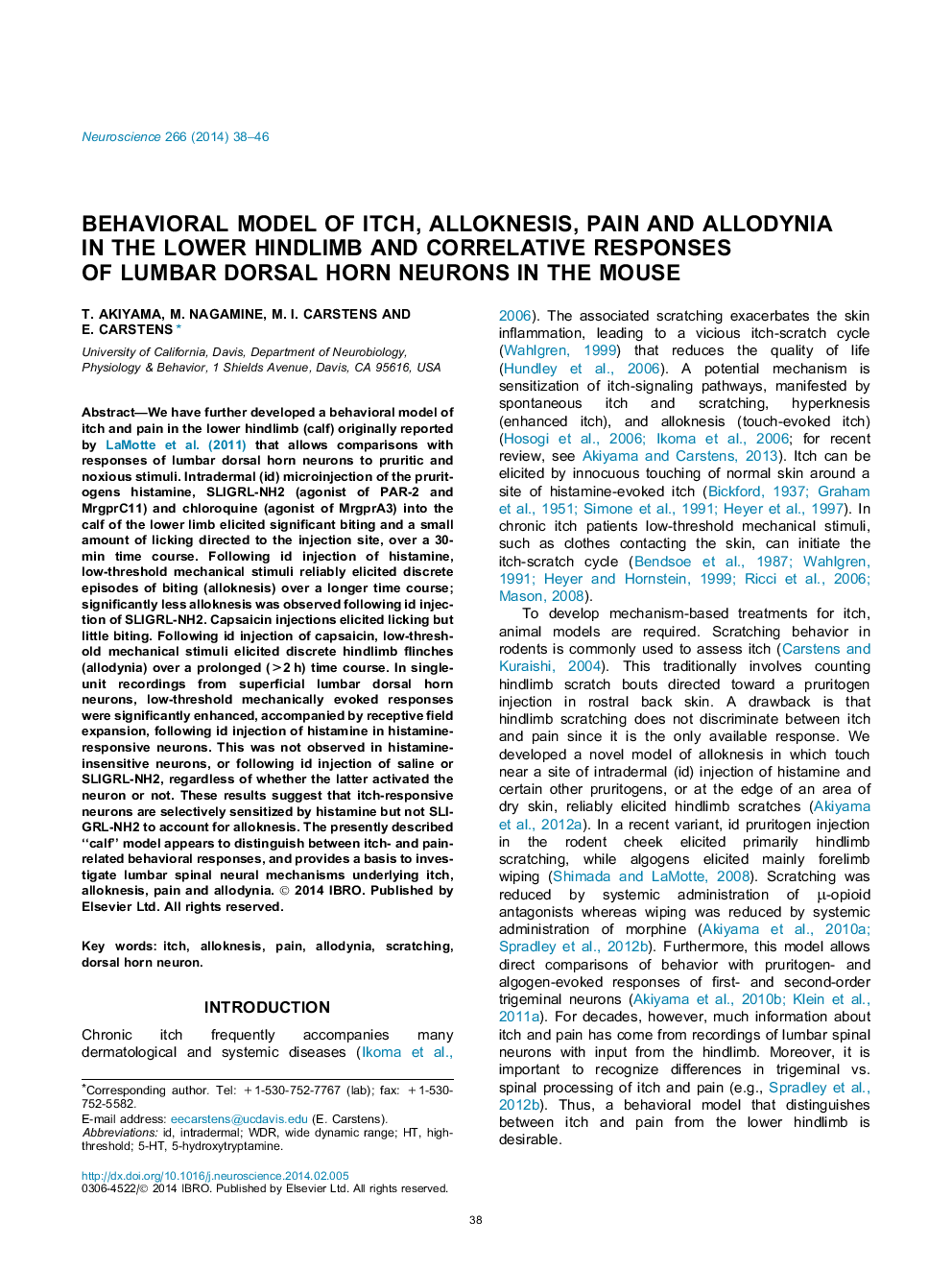| Article ID | Journal | Published Year | Pages | File Type |
|---|---|---|---|---|
| 4337692 | Neuroscience | 2014 | 9 Pages |
Abstract
We have further developed a behavioral model of itch and pain in the lower hindlimb (calf) originally reported by LaMotte et al. (2011) that allows comparisons with responses of lumbar dorsal horn neurons to pruritic and noxious stimuli. Intradermal (id) microinjection of the pruritogens histamine, SLIGRL-NH2 (agonist of PAR-2 and MrgprC11) and chloroquine (agonist of MrgprA3) into the calf of the lower limb elicited significant biting and a small amount of licking directed to the injection site, over a 30-min time course. Following id injection of histamine, low-threshold mechanical stimuli reliably elicited discrete episodes of biting (alloknesis) over a longer time course; significantly less alloknesis was observed following id injection of SLIGRL-NH2. Capsaicin injections elicited licking but little biting. Following id injection of capsaicin, low-threshold mechanical stimuli elicited discrete hindlimb flinches (allodynia) over a prolonged (>2Â h) time course. In single-unit recordings from superficial lumbar dorsal horn neurons, low-threshold mechanically evoked responses were significantly enhanced, accompanied by receptive field expansion, following id injection of histamine in histamine-responsive neurons. This was not observed in histamine-insensitive neurons, or following id injection of saline or SLIGRL-NH2, regardless of whether the latter activated the neuron or not. These results suggest that itch-responsive neurons are selectively sensitized by histamine but not SLIGRL-NH2 to account for alloknesis. The presently described “calf” model appears to distinguish between itch- and pain-related behavioral responses, and provides a basis to investigate lumbar spinal neural mechanisms underlying itch, alloknesis, pain and allodynia.
Keywords
Related Topics
Life Sciences
Neuroscience
Neuroscience (General)
Authors
T. Akiyama, M. Nagamine, M.I. Carstens, E. Carstens,
